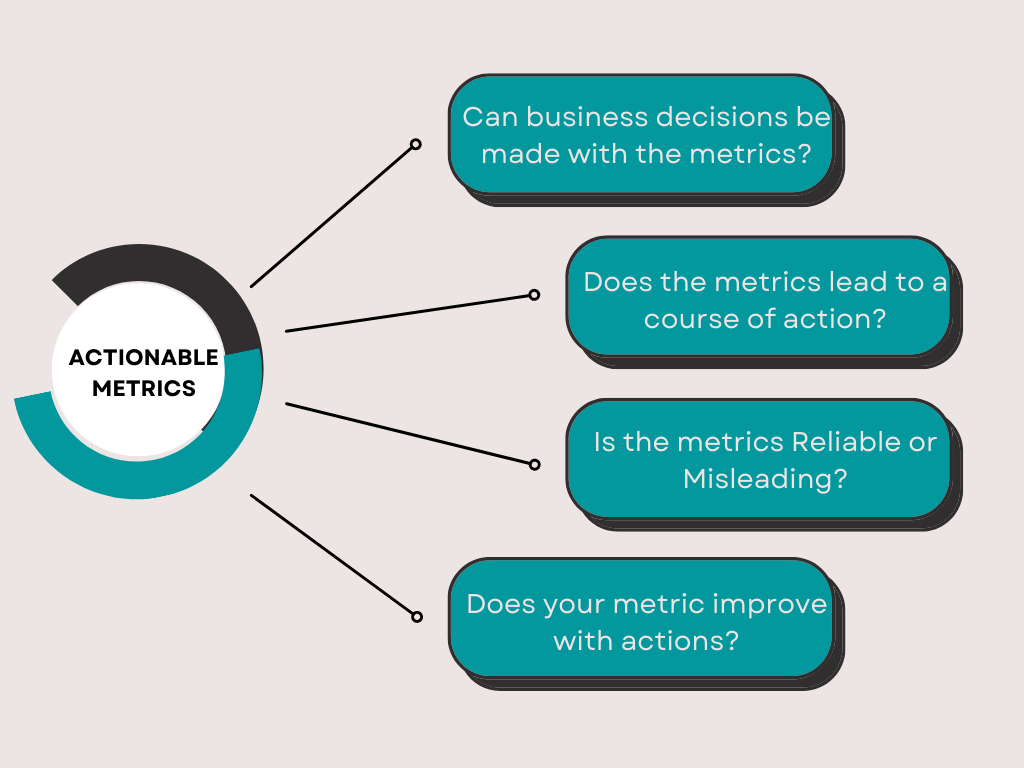
What are Vanity Metrics?
Vanity metrics are metrics that look impressive for the business, but in reality, they lack actionable data and do not help take better decisions. Often vanity metrics are easy to obtain, but it does not provide insights into how your business is performing or the value they bring to your business objectives/goals might be very little. They might tell a good story but not the whole story.
Examples of Vanity metrics are:
Having a monthly website visitor count of 1M might seem very impressive. However, it does not mean much if only 1K out of that traffic is converted to active users.
Similarly, for a subscription business, Total Free-trials/ Customer-Signups might not be useful if they don’t translate into revenue-generating customers. Same with app downloads, having 100 app downloads per day is meaningless, if they don’t convert into revenue.
There is nothing wrong in tracking and monitoring these vanity metrics. But relying too much on them might make you believe that your business is getting results. These vanity metrics when viewed individually might not add value to your business. But when they are clubbed with other metrics, they might add value. Hence, the key is, to understand your metrics, their implications, and how you can leverage them to get more insights on your business and make well-informed business decisions.
What are Actionable Metrics?
Actionable metrics are metrics that directly relate business actions to results. They clearly give valuable insights that are related to business objectives. These metrics help to take well-informed decisions and achieve business objectives. Actionable metrics give you exact measures of customer satisfaction, retention, growth rate, conversion rate etc. They will help you identify improvements in your business strategy and are clearly aligned to your business goal. These metrics are well defined.
Examples of Actionable Metrics are:
The metric ‘Marketing conversion rate’ gives a clear measure of the rate at which your website visitors are converted to active revenue-generating customers. This metric clearly shows the number of genuine visitors coming to your website and the effectiveness of your marketing strategies. Just the number of visitors to the website is a vanity metric that will not give any real information. However, knowing the number of qualified leads out of that total; and the channel through which they came will be a piece of very valuable information on which you can act upon.
Similarly, for a subscription business, the free-trial to paid conversion rate, the average user sessions per week/day, Net promoter score etc. will show the value your product is adding to customers.
Though vanity metrics does not empower us to take decisions, they help in guiding you in the right direction. Thus, vanity metrics and actionable metrics combined together can give deeper insights. You need to ensure that the metrics you monitor not just make you feel good but also urge you to take specific action to boost performance and improve your business goals.
How to identify if your metrics are Vanity metrics/Actionable metrics?

The first step that you need to take is to define your organizational/business goal before selecting the metrics to track. Once the goals are defined, associate an actionable metric to achieve each of these goals. Every business has different goals, so it is super important to identify the right goals and select the most suited metrics for them. Vanity metrics for one organization might be actionable for another and vice-versa. Hence, make sure that your business goals are smartly defined and the right metrics are chosen according to these goals.
If you are already tracking metrics, then identify how these metrics will help you measure, achieve and improve your progress towards your business goals. If it does not give measurable progress then it is a vanity metric. Audit your already tracking metrics by following these below steps to identify if the metrics that you are tracking are Vanity or Actionable.
1. What business decisions can be made with the metrics?
If the metric that you see gives a clear indication of the course of action to be taken or the decision to be made, then it is actionable. Based on the number that you see you should be able to refine or improve activities to achieve your business goals. If the metric does not make you act on the number that you see, then it is a vanity metric.
2. Is the metrics reliable or are they misleading?
A metric should be accurate and reflect the business performance. Else it might mislead your business decisions which will be highly dangerous. Hence, always make sure that the metric that you track is speaking the truth. For example, social media followers or website traffic can be easily achieved by spending a few dollars. However, this often does not speak the truth about your brand or marketing strategy. This is a pure vanity metric.
3. Is a change in the action causing an improvement in the metrics?
If the metric that you see gives a clear indication of the action to be taken; as well as, the action, in turn, improves this metric value, then it is an actionable metric. Only solid metrics will get improved themselves when the right actions are taken. They show you the full picture of what actions worked and what did not.
Conclusion
It’s rightly said, ‘you can’t improve what you don’t measure’. Hence, what you measure and how you measure is very important. As much as the right metric that helps you in your growth, a wrongly analyzed metric can be very dangerous for your business health. Read more on how to convert your vanity metric to actionable metric in our ‘Convert your Vanity metric to Actionable metric’ article. Though vanity metrics might look very fancy, if it isn’t actionable, they might not be doing good for your business. Always remember, all that glitters is not gold!


